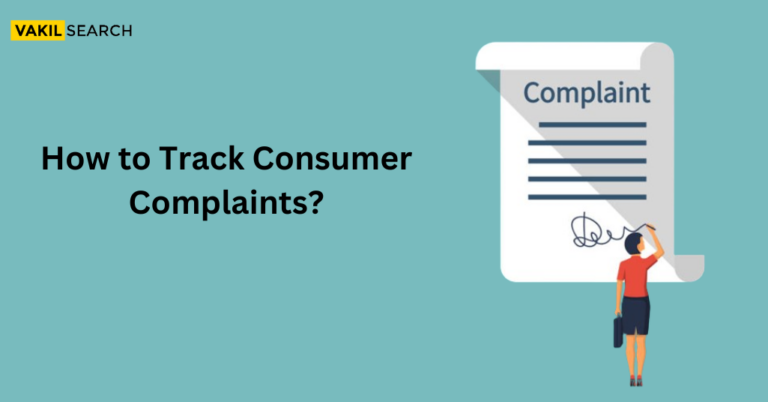PMLA 2002 fights money laundering in India, outlining rules, penalties, and deterrents. Understand its essentials for compliance and legal consequences.
Prevention of Money Laundering Act
The Prevention of Money Laundering Act (PMLA) is a crucial law in India aimed at tackling the serious problem of money laundering and the funding of illegal activities. Essentially, it provides a set of rules to stop and control money laundering, seize the money gained from criminal activities, and punish those who break the rules.
The goal of the act is to strongly discourage people from getting involved in money laundering and make sure that those who do face the right legal consequences. It’s important for both regular people and businesses to understand the key rules of the PMLA so they can follow them and help in the fight against money laundering. This guide offers a detailed overview of the Prevention of Money Laundering Act of 2002.
What is Prevention of Money Laundering Act?
The Prevention of Money Laundering Act, 2002 (PMLA) is a legislative act in India enacted by the Parliament of India to prevent money laundering, and to provide for the confiscation of property derived from crime and for matters connected therewith.
Money Laundering
Definition:
The process of concealing the origin of illegally obtained proceeds of crime by converting them into seemingly legitimate assets or funds.
It Involves Three Stages:
- Placement: Introducing the illegal funds into the financial system.
- Layering: Complicated transactions to disguise the source of funds.
- Integration: Using the laundered funds to purchase assets or invest in legitimate businesses.
Proceeds of Crime
Definition:
Any property derived or obtained, directly or indirectly, as a result of criminal activity.
Includes:
- Cash generated from drug trafficking, smuggling, fraud, corruption, etc.
- Property acquired through criminal means, such as stolen goods or real estate purchased with illicit funds.
- Financial instruments or investments made with proceeds of crime.
Reporting Entity
Definition:
Institutions and individuals who are required by law to report suspicious transactions to the Financial Intelligence Unit (FIU) of India.
Includes:
- Banks, financial institutions, and intermediaries
- Designated non-financial businesses and professions (DNFBPs), such as casinos, real estate agents, jewelry dealers, and lawyers
- Chartered accountants, company secretaries, and cost accountants
What Are the Objectives of Money Laundering Act 2002?
The Prevention of Money Laundering Act 2002 (PMLA) aims to tackle the complex issue of money laundering in India. Its key objectives are:
-
To Prevent Money Laundering:
- The core objective of PMLA is to disrupt the cycle of money laundering by making it difficult for criminals to convert illegally obtained funds into legitimate assets.
- This involves measures like:
- Strengthening KYC (Know Your Customer) practices of financial institutions to identify suspicious transactions.
- Introducing reporting obligations for designated entities like banks, casinos, and real estate agents to flag suspicious activity.
- Empowering investigative agencies like the Enforcement Directorate (ED) to track and seize proceeds of crime.
-
To Combat Financing of Illegal Activities:
- Money laundering often fuels crimes like drug trafficking, terrorism, and organized crime. PMLA aims to cut off the financial lifeline of these illegal activities by:
- Criminalizing the act of money laundering itself, with stringent penalties for offenders.
- Confiscation of property derived from or involved in money laundering, making it financially unattractive for criminals.
- International cooperation with other countries to combat cross-border money laundering activities.
-
To Protect the Financial System:
- Money laundering can undermine the integrity and stability of the financial system. PMLA aims to safeguard the financial system by:
- Preventing the infiltration of illegal funds into the financial system, protecting legitimate businesses and investors.
- Enhancing transparency and accountability in financial transactions, making it harder for criminals to operate undetected.
- Boosting India’s international reputation as a country committed to combating money laundering.
Aspects of Prevention of Money Laundering Act 2002
To achieve its objectives, PMLA incorporates various aspects:
- Definition of Money Laundering:
- PMLA provides a clear definition of money laundering, encompassing the placement, layering, and integration stages of the process.
- Proceeds of Crime:
- The Act broadly defines proceeds of crime to include any property derived from criminal activity, making it harder for criminals to hide their illicit gains.
- Reporting Obligations:
- PMLA imposes mandatory reporting obligations on various entities, including banks, financial institutions, and designated non-financial businesses and professions (DNFBPs). These entities are required to report suspicious transactions to the Financial Intelligence Unit (FIU) of India.
- Investigation and Enforcement:
- The Act empowers the Enforcement Directorate (ED) to investigate money laundering cases, arrest suspects, and seize proceeds of crime.
- International Cooperation:
- PMLA recognizes the global nature of money laundering and provides for cooperation with other countries to combat cross-border laundering activities.
- Penalties:
- Stringent penalties are prescribed for offenses related to money laundering, acting as a deterrent for potential offenders.
- Periodic Amendments:
- PMLA is a dynamic law that undergoes periodic amendments to adapt to evolving money laundering techniques and international best practices.
Entities Under Provisions of the Prevention of Money Laundering Act
The PMLA covers a broad range of entities, including:
Financial Institutions:
- Banks
- Mutual funds
- Insurance companies
- Securities dealers
- Non-banking financial companies (NBFCs)
- Payment system operators
- Investment advisors
Designated Non-Financial Businesses and Professions (DNFBPs):
- Casinos
- Real estate agents
- Dealers in precious metals and stones
- Lawyers
- Chartered accountants
- Company secretaries
- Cost accountants
Obligations of Reporting Entities for Money Laundering Act 2002
These entities have specific obligations under the PMLA, including:
- Customer Due Diligence (CDD):
- Verifying the identity of customers and beneficial owners
- Understanding the nature and purpose of business relationships
- Assessing and monitoring risk levels of customers
- Record-Keeping:
- Maintaining records of transactions for at least 5 years
- Keeping records of customer identification documents
- Maintaining records of all suspicious transactions reported to the FIU
- Reporting Suspicious Transactions:
- Reporting transactions that may involve proceeds of crime to the FIU
- Reporting transactions that are inconsistent with customer’s known profile
- Reporting transactions that have no apparent economic or lawful purpose
- Internal Controls:
- Implementing internal controls to prevent money laundering
- Designating a compliance officer responsible for AML compliance
- Conducting regular training for employees on AML obligations
- Cooperation With Authorities:
- Cooperating with law enforcement agencies in investigations
- Providing information and documents as required
- Complying with freezing orders and other measures
Amendments for Prevention of Money Laundering Act 2002
Since its enactment in 2002, the PMLA has undergone several amendments to strengthen its provisions and address emerging challenges. Key amendments include:
- 2005 Amendment: Expanded the scope of the Act to cover more predicate offenses, including terrorism financing and cybercrimes.
- 2009 Amendment: Introduced measures to enhance international cooperation and asset recovery.
- 2013 Amendment: Increased the punishment for money laundering and strengthened the powers of the Enforcement Directorate (ED).
- 2015 Amendment: Enhanced the role of the Financial Intelligence Unit (FIU) in sharing information with law enforcement agencies.
- 2018 Amendment: Introduced provisions for attachment and confiscation of benami (proxy) property.
- 2019 Amendment: Further strengthened the powers of the ED, including the power to arrest and search without a warrant.
- 2022 Amendment: Incorporated provisions for virtual assets and virtual asset service providers.
Imposable Punishment Under the Act
- Money Laundering: Imprisonment for a term of 3-7 years, which may extend to 10 years for certain offenses, and a fine.
- Failure to Report Suspicious Transactions: Imprisonment for a term of 3 months to 1 year, or a fine, or both.
- Wilful Contravention of PMLA Provisions: Imprisonment for a term of 3-7 years, and a fine.
Conclusion:
The Prevention of Money Laundering Act (PMLA) is a crucial piece of legislation in India’s fight against money laundering. It has evolved over time to address evolving threats and strengthen its effectiveness. While it has faced some criticisms regarding its scope and enforcement, it has played a significant role in curbing illicit financial flows, confiscating proceeds of crime, and deterring potential money launderers. Its continued adaptation to emerging challenges will be vital in ensuring a cleaner and more secure financial system in India.
FAQs
Who needs to comply with the PMLA's anti-money laundering regulations?
A wide range of entities are obliged to comply with the PMLA, including: Financial Institutions: Banks, mutual funds, insurance companies, non-banking financial companies, payment system operators, investment advisors, etc. Designated Non-Financial Businesses and Professions (DNFBPs): Casinos, real estate agents, precious metals and stones dealers, lawyers, chartered accountants, company secretaries, etc.
What are the reporting requirements under the PMLA?
Reporting entities have several obligations, including: Customer Due Diligence (CDD): Verify customer identity, understand business relationships, assess and monitor customer risk. Record-Keeping: Maintain transaction records for 5+ years, keep customer ID documents, record suspicious transactions reported to the FIU. Suspicious Transaction Reporting: Report transactions involving potential proceeds of crime, inconsistent with customer profile, or with no apparent economic purpose. Internal Controls: Implement controls to prevent money laundering, designate a compliance officer, train employees on AML obligations.
How does the PMLA impact businesses and individuals?
Businesses must conduct CDD on customers, maintain records, and report suspicious transactions. Individuals may face stricter identity verification when dealing with reporting entities.
What are the penalties for non-compliance with the PMLA?
Penalties can be severe, including: Money laundering: Imprisonment for 3-7 years, potentially extending to 10 years for certain offenses, and a fine. Failure to report suspicious transactions: Imprisonment for 3 months to 1 year, or a fine, or both. Wilful contravention of PMLA provisions: Imprisonment for 3-7 years, and a fine.
Is the PMLA involved in international cooperation?
Yes, the PMLA has provisions for collaborating with foreign law enforcement agencies to investigate and prosecute money laundering cases, as well as sharing information and implementing international conventions on anti-money laundering.
How often are PMLA regulations updated?
The PMLA is regularly updated, so staying informed is crucial. Reporting entities should consult official sources like the ED and FIU websites for updates and guidance.
Read more:-










